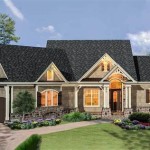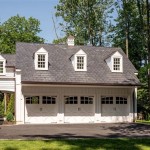Choose The Right Garage Siding For Your Home
The selection of garage siding is a crucial decision that significantly impacts both the aesthetic appeal and structural integrity of a home. The garage, often a prominent feature of a property, contributes substantially to the overall curb appeal. Choosing an appropriate siding material that complements the existing house design, withstands local climate conditions, and aligns with budgetary constraints is essential. This article explores various garage siding options, detailing their advantages, disadvantages, and key considerations to aid in making an informed decision.
Garage siding serves multiple critical functions. Beyond its aesthetic role, it acts as a protective barrier against the elements, shielding the garage's structure from rain, snow, wind, and sunlight. Proper siding installation can prevent moisture intrusion, which can lead to rot, mold growth, and structural damage. It also contributes to the garage’s insulation, helping to regulate temperature and potentially reduce energy costs if the garage is heated or cooled. Furthermore, specific siding materials offer enhanced fire resistance, adding an extra layer of safety to the property.
Before embarking on the selection process, it is imperative to assess the existing architectural style of the house. The garage siding should ideally harmonize with the main house siding in terms of color, texture, and overall design. A cohesive appearance enhances the property’s value and visual appeal. Consider the surrounding environment, including the climate and potential exposure to harsh weather conditions. Areas prone to heavy rainfall or snowfall will benefit from water-resistant siding materials, while regions with intense sunlight require siding that resists fading and UV damage. Finally, establishing a budget is paramount. Garage siding materials vary widely in price, and factoring in installation costs is essential for realistic financial planning.
Key Considerations for Selecting Garage Siding: Durability, Maintenance, and Aesthetics
Durability is a primary factor when choosing garage siding. The chosen material should withstand the rigors of daily wear and tear, as well as the prevailing climate conditions. Materials known for their long lifespan and resistance to damage from impact, moisture, and pests are generally preferred. The expected lifespan of the siding directly correlates to its long-term cost-effectiveness, as more durable materials require less frequent replacement and maintenance.
Maintenance requirements are another vital consideration. Some siding materials demand regular painting, sealing, or cleaning to maintain their appearance and protective qualities, while others are virtually maintenance-free. Evaluating the amount of time and effort one is willing to invest in maintaining the siding is crucial. Low-maintenance options, although potentially more expensive upfront, can save significant time and money in the long run. Consider the ease of repair should the siding become damaged. Some materials are simpler to patch or replace than others, which can impact repair costs and downtime.
Aesthetic appeal is undoubtedly an important aspect of garage siding selection. The siding significantly contributes to the overall curb appeal of the home and should complement the architectural style and color scheme of the main house. The available variety of colors, textures, and styles allows homeowners to achieve a desired look and feel. However, it is advisable to prioritize siding materials that offer both aesthetic appeal and practical benefits, such as durability and low maintenance. Consider the long-term visual impact of the siding. Will it age gracefully and retain its aesthetic value over time? Choosing timeless styles and colors can help ensure that the garage siding remains visually appealing for years to come.
Common Garage Siding Materials: Wood, Vinyl, and Metal
Wood siding presents a classic and aesthetically pleasing option, offering a natural and warm appearance. It is versatile and can be painted or stained in a wide range of colors to match any home design. However, wood siding requires regular maintenance, including painting or staining every few years, to prevent rot, insect infestation, and warping. Certain types of wood, such as cedar and redwood, are naturally more resistant to decay and insects, but they tend to be more expensive. The initial cost of wood siding can be moderate, but the ongoing maintenance expenses can add up over time. Furthermore, wood is susceptible to fire damage and may require additional fireproofing measures.
Vinyl siding is a popular choice due to its affordability, durability, and low maintenance requirements. It is available in a wide variety of colors and styles, including options that mimic the look of wood. Vinyl siding is resistant to moisture, insects, and rot, and it does not require painting or staining. It is relatively easy to install, making it a cost-effective option for many homeowners. However, vinyl siding can be prone to fading over time, particularly in areas with intense sunlight. It is also susceptible to damage from impact, such as from hail or flying debris. While repairs are relatively simple, replacing entire sections of vinyl siding may be necessary in cases of significant damage.
Metal siding, including aluminum and steel options, offers exceptional durability and resistance to the elements. It is fire-resistant, insect-proof, and requires minimal maintenance. Metal siding is available in a range of colors and styles, and it can be painted or coated for enhanced protection and aesthetics. Aluminum siding is lightweight and relatively easy to install, but it is susceptible to denting. Steel siding is more durable and resistant to denting, but it is also heavier and more expensive. Both aluminum and steel siding can be more expensive than vinyl siding, but their long lifespan and low maintenance requirements can make them a cost-effective option in the long run. Metal siding is also environmentally friendly, as it is often made from recycled materials and can be recycled at the end of its lifespan.
Exploring Alternative Siding Options: Fiber Cement and Composite Materials
Fiber cement siding is a composite material made from cement, sand, and cellulose fibers. It offers a combination of durability, aesthetics, and low maintenance. Fiber cement siding is resistant to fire, insects, and rot, and it can withstand harsh weather conditions. It is available in a variety of textures and styles, including options that mimic the look of wood, stucco, and brick. Fiber cement siding can be painted to match any home design, and it holds paint well, requiring less frequent repainting than wood siding. However, fiber cement siding is heavier than vinyl or wood siding, and it requires professional installation. It is also more expensive than vinyl siding, but its durability and low maintenance can make it a worthwhile investment.
Composite siding materials, often made from recycled wood fibers and plastic, provide a durable and environmentally friendly alternative to traditional siding options. These materials are resistant to moisture, insects, and rot, and they require minimal maintenance. Composite siding is available in a variety of colors and styles, and it can be designed to mimic the look of wood or other natural materials. It is typically more expensive than vinyl siding, but its durability and low maintenance can make it a cost-effective option in the long run. Composite siding is also a sustainable choice, as it is often made from recycled materials and helps to reduce waste. However, it is important to choose high-quality composite siding products to ensure long-lasting performance and resistance to fading and warping.
The selection of garage siding is a multifaceted process that requires careful consideration of various factors, including durability, maintenance, aesthetics, and budget. By thoroughly evaluating the available options and weighing the pros and cons of each material, homeowners can make an informed decision that enhances the beauty, value, and longevity of their property. Consulting with a qualified contractor or siding professional is recommended to ensure proper installation and to address any specific concerns or questions.

Choose The Right Siding For Your Kansas City Home Lumber One

Siding Profiles How To Choose The Best One For Your Home

Garage Door Color Should It Match Your Siding Or Front A Better

How To Choose The Perfect Garage Door Match Your Home Giel Doors

5 Tips To Choose The Right Garage Door For Your Home A1 Company

The Best Types Of Siding For Your Home S Exterior Brick Batten

Mix Exterior Profiles Easy Tips To Consider

How To Choose The Right Exterior Color For Your Home

Top 6 Exterior Siding Options

Choosing The Right Siding For Your Missouri Home
Related Posts








